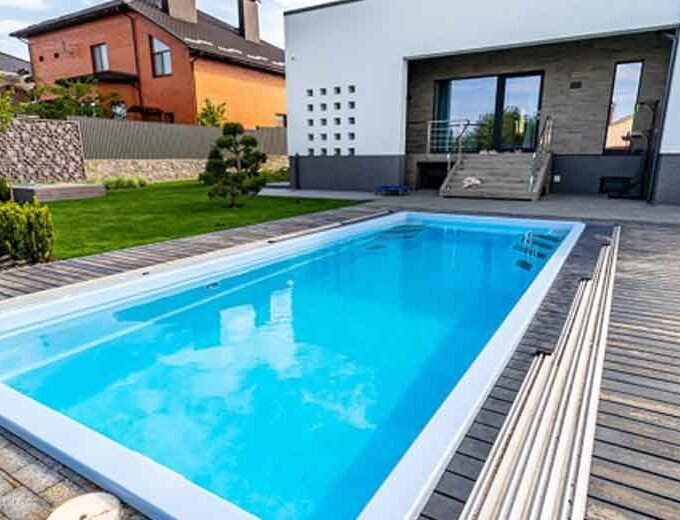While trends come and go, mosaic designs remain beloved for their versatility and visual intrigue. Any space can be transformed by incorporating mosaic tiles into floors, walls, furniture, pools and more. Their splash of vibrancy injects life into surroundings across interior and exterior settings.
With proper installation techniques and regular sealing, these tiles will withstand decades of admiration. Their sustainably sourced materials like recycled glass make mosaic tiles an eco-friendly design investment that pays artistic dividends.
This installation guide covers how to recreate mosaic magic within your own spaces. Learn the fundamentals from choosing compelling compositions to meticulous placement methods for stunning results. Unleash your inner artisan by crafting a customized mosaic design aligned with your personal sensibilities.
A Historic Art Form That Still Dazzles
Mosaics are found to date back over 5,000 years to Mesopotamian civilizations. These first emerged as an embellishment for palaces and temples in ancient Mesopotamia, Egypt and Greece. Craftsmen arranged small colored stones, glass or tiles to form elaborate images and patterns. This art form has stood the test of time with mosaic tile still being extremely popular for decorating walls, floors, pools and furniture today.
Companies like mosaic tile manufacturer Tilebar offer a plethora of styles to choose from. As mosaic design grew prevalent under the Byzantine Empire and throughout the Middle Ages to decorate religious spaces like churches, more and more artisans refined the intricate craft.
Mosaics later fell out of favor until a resurgence in the 20th century. Art Nouveau and Modernist movements revived interest in the decorative style by integrating it into furniture, architectural accents, public spaces and more.
Captivating Design Elements
When planning your own mosaic project, consider these key elements that create visual impact:
Color Palette
Select a thoughtfully composed array of colorful tiles, glass pieces or found objects in your preferred hues. Contrasting shades that complement each other make details stand out. Whether going for a bold, vibrant style or muted natural tones, ensure there is enough variation to make certain aspects pop yet cohere as a whole.
Shape
Incorporate some variance of organic shapes, rectangles, hexagons and triangles. Circular pieces can act as focal points amidst geometric ones in straight lines. Having different textures like iridescent glass, smooth ceramic and rough stone also adds dimensionality.
Accents
Brass, copper or stainless steel tiles can add shimmering depth. Metallic colors reflect light beautifully to make mosaic creations glisten. They lend warmth against cooler glass or tiles for a noticeable, but balanced glow.
Scale
Make sure your mosaic will suit its dimensions and placement. Measure the area your artwork will occupy and design appropriately scaled patterns or images. The amount of fine detail determines how large each tesserae piece should be. Mosaic murals may have thousands of tiny tiles while furniture accents look better with bigger pieces.
Professional Guidance
To help plan pleasing designs, professional mosaic artists offer consultations for color selection, composition layouts and calculating how many tiles you need. Their artistic eye and years of experience create stunning bespoke installations.
Mosaic Tile Material Comparison
| Material | Durability | Price Range |
| Ceramic | Durable, resistant to chips/cracks | $ |
| Porcelain | Extremely durable, very hard surface | $$ |
| Glass | Prone to cracking/chipping | $-$$$ |
| Metal | Very durable | $$$ |
Meticulous Project Planning
Capitalizing on mosaic tiles’ visual potential requires meticulous planning for flawless execution. Follow these best practices:
Select the Right Surface
Mosaics must be installed onto properly prepared surfaces like:
- Floors – Cement, wood, existing tile
- Walls – Drywall, plaster, cement board
- Furniture – Sanded and primed wood, metal
- Decor Items – Glass, ceramics, resin materials
- Outdoor Settings – Waterproof cement, granite, slate
The substrate must be waterproofed for wet areas first. Check for any cracks, peeling paint or uneven areas requiring smoothing. Speak to a professional about appropriate surface types for custom mosaic applications.
Purchase Quality Materials
Gather all necessary high-grade materials before starting:
- Tiles – Calculate the area and order 10% extra mosaic tiles
- Adhesive – Cement-based thin set mortar designed for mosaics
- Grout – Staining-resistant epoxy or pre-mixed grout
- Tools – Nippers for cutting tiles, plastic spacers, grout floats
Hire Specialized Artisans
Consider having mosaic work done by qualified tile professionals and artisans for:
- Intricate custom designs needing CAD plans
- Meticulous installations of thousands of tiny tesserae
- Large specialty projects like pools, ceilings or ceilings
Flawless Installation Technique
Achieving mosaic installation success relies heavily on flawless technique:
Prep the Surface
- Clean the area thoroughly, removing residues or grime
- Check stability – address any loose tiles, cracks in walls
- Prime surface if recommended by adhesive manufacturer
Proper preparation prevents mosaics from de-bonding or cracking from minor movements later.
Layout Design & Tiles
- Create a grid pattern divided into workable sections
- Sketch sections to follow placement order logically
- Arrange mosaic tiles based on the numbering system
- Use plastic spacers consistently for designated grout width
Organized mapping and tile setting prevent missing spots and corrections.
Apply the Adhesive
- Use a cement-based thin set mortar adhesive
- Apply an even layer using the flat side of the trowel to scratch the surface
- Spread only enough adhesive for the section being worked
- Firmly press tiles into adhesive and check alignment is straight
Consistent thinset coverage securely bonds mosaic tiles to the surface below.
Grout Application & Finishing
- Force grout firmly between mosaic tile joints with a rubber float
- Wipe gently across diagonally to remove excess grout
- Once grout dries per manufacturer instructions, polish and seal
Caring for Your Mosaic Creation
To enjoy mosaic installations for decades, adhere to these care guidelines:
Sealants for Protection
- Apply penetrating sealants to shield from moisture
- Re-apply sealant annually as it wears off over time
- Penetrating sealants safeguard tile pieces and grout
- Topical sealants alter appearance with a surface coating
Sealants prevent staining or water damage to preserve beauty.
Specialized Tile Cleaners
- Use gentle cleaners specifically made for tile
- Avoid harsh chemicals, acidic or abrasive formulas
- Combine warm water, pH neutral cleaner and a soft cloth
- Rinse thoroughly after cleaning the mosaic
Gentle cleaners lift dirt without eroding grout or scratching delicate mosaic tiles.
Cautious Handling
- Avoid dragging furniture, ladders or tools across mosaic
- Place walk-off mats outside to collect grit from shoes
- Install padding on chair legs, table bases if possible
- Take off shoes inside residences before walking on mosaic flooring
Being mindful around the space with mosaics prevents costly damages or loose tiles needing repairs. Consider hiring a professional cleaning service accustomed to handling intricate tiled surfaces for periodic deep cleaning as well.
Repair Considerations
If repairs are ever needed:
- Take a sample damaged tile to find a matching replacement
- Check if the source company has the same production lot
- A skilled artisan can carefully remove broken mosaics and replace them
With close color matches and experience removing tiles, repairs can fix affected areas while retaining the original mosaic charm.
Frequently Asked Questions
How do I match existing mosaic tiles for a repair?
Take a sample tile to a specialty retailer to try to find an identical or close match. Colors and tile sizes may vary slightly from different production lots.
Can mosaic tiles be used outdoors and in wet areas?
Yes, porcelain or glass mosaic tiles are suitable for wet environments, but the substrate surface must be waterproofed appropriately first.
What’s the best way to clean stained grout between mosaic tiles?
Mix baking soda and lemon juice into a paste and gently apply to stained areas. Let sit for 5 minutes before scrubbing with a small brush and rinsing clean.
Conclusion
Like a fragmented painting reassembled into a unified scene, mosaic tiles reconnect us to storied artistic traditions with a modern twist. Their time-transcending appeal stems from the beauty found in gathering life’s broken shards and honoring their worth by granting them a new purpose.
Whether using mosaic artwork to commemorate loved ones, inject creative flair into a commercial space or purely admire their aesthetic charm – these tiles touch our souls. Their comforting complexity reminds us that the whole comprises many parts coming together in harmony.
















